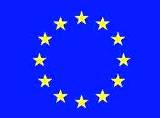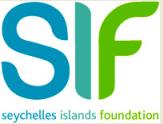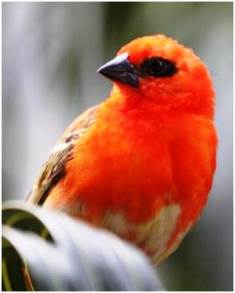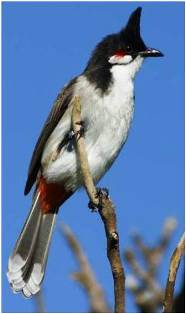EU-funded Eradication of Avian Invasive Alien Species project on Assumption Island-Bird count hits milestone 5,000 on week 55 |24 November 2012



The programme is led by the Seychelles Islands Foundation (SIF) and funded by the European Union (EU).
It was on Sunday November 4, more precisely in the evening that members of the eradication team, operating on the north coast brought in bird number 5,000 which was a Red-whiskered bulbul.
At the end of week 55 of the eradication (November 4-10), the total count was 5,080, including 2,555 Red-whiskered bulbuls (Pycnonotusjocosus) and 2,525 Madagascar foodies (Foudiamadagascariensis).

The catch represents 56.8% of the mid-range estimate of 4,500 (3,000–6,000) Red-whiskered bulbuls estimated during the census done in Phase 1, while the fody catch already greatly exceeds the estimated 1,600 (1,200–2,200) in the census.
The project, being carried out in partnership with the Islands Development Company (IDC) and the Island Conservation Society (ICS), is a major part of SIF’s programme to mainstream the management of invasive alien species, in order to preserve the ecological integrity and boost the resilience of Seychelles world heritage sites.
Threat to biodiversity and ecological integrity
Its main target is to eradicate the avian invasive species from Assumption Island, which pose the greatest threat to the avian biodiversity and ecological integrity of Aldabra Atoll. It started with feasibility studies followed by development and implementation of eradication techniques.
As such, the project has national as well as global importance. Both species have already reached Aldabra, as reported in this newspaper in April 2012, indicating that the long-discussed threat of their presence on Assumption to Aldabra is well-founded.
Early observations are confirming concerns that the introduced species are more dominant and could out-compete Aldabra’s native birds. It is not yet known whether the parasites carried by the introduced birds on Assumption have been transmitted to Aldabra’s birds, or whether any hybridisation has occurred between the native and introduced species on Aldabra. By running two intensive avian eradications in parallel, the SIF is hoping to eliminate these threats posed by the introduced birds on Aldabra and eliminate their source on Assumption.
The first phase of the eradication project consisted of feasibility studies trialling eradication techniques and an initial census of all of Assumption’s resident landbirds including the introduced species, the red-whiskered bulbul and Madagascar fody, and the only common native land bird, the souimanga sunbird.
Two other introduced birds species initially thought to be present, the barred ground dove (Geopeliastriata) and the Mozambique serin (Serinusmozambicus), were confirmed to be locally extinct on Assumption, thus no longer a threat to Aldabra’s avifauna.
Point counts and distance analysis were used to estimate population sizes of Red-whiskered bulbuls, Madagascar fodies and Souimanga sunbirds on the island. The counts revealed that there were many more bulbuls and fodies than had been expected but the positive news was that there were also an estimated 15,000 souimanga sunbirds on the island.
In the second phase – which is ongoing – results from the first phase are being used to initiate large-scale control of the introduced birds, aiming for complete eradication of both species from Assumption. All birds caught are processed weighed, sexed, moult-scored, aged if possible, measured, and checked for parasites.
This involves recording age, sex (by dissection), body mass, head-bill length, and plumage characteristics – particularly of fodies – including the moult status of the primary wing feathers.
Shooting found efficient
During this phase of the eradication programme, most birds are being caught in mist nets, this being particularly effective during the period when birds are flocking and commuting to and from communal night roosts. In addition, both bulbuls and fodies proved vulnerable to shooting, with air rifle and shot gun in their night roosts.
Other than roost shooting, potential water sources were also scouted and several birds were also culled through this method.
Avian shooting specialist Peter Haverson explained that this method is efficient with evading birds, as well as those which are avoiding the mist nets. He said that at this stage of the eradication project, the number of birds is getting lower and as a back-up method, the shooting is less tiring and quite efficient. He explained that the birds are being targeted at water catchments and in some areas water containers are being placed to attract them. Live decoy birds are also placed in cage traps – in the shade with sufficient food and water – to attract other birds, while recorded bird calls are also being used to draw them.
As for the shot birds count, Mr Haverson said he is very satisfied, considering various factors which affect the method. These include strong winds, as well as the intelligence of the Red whiskered bulbul, a bird which has never been broadly targeted in an eradication before. Local invasive species technical officer Julio Agricole has also received specialised shooting training and he will be in charge of the shooting following the departure of Mr Haverson.
Observation camps were also organised, focussing in the northern part of the island to investigate and identify potential activity and roosting areas for future mist netting and shooting trips.
Total birds culled at the end of week 55 (November 4-10)
Species Mist-netted Shot Total
Red-whiskered bulbul 2,311 244 2,555
Madagascar fody 2,422 103 2,525
The main recommendations from the work undertaken so far are:
• that mist netting should continue to form the main eradication technique
• monitoring of behaviour must continue to identify further periods of increased vulnerability
• trials of baits and artificial water sources should continue through the dry season to identify potential periods of food and water shortage when birds might be attracted to these resources
• further opportunities to shoot at night roosts across the island should be made, and
• that further techniques of killing birds in night roosts should be investigated.
According to project manager Dr Nancy Bunbury, who spent one month on Assumption leading the team from September to October, the entire project on Assumption so far has been remarkable, challenging and very rewarding. She explained that the eradication has been complicated from the beginning by larger than expected population sizes of the two target species and the birds' unpredictable behaviour on the island, making normal control techniques ineffective.
Dr Bunbury added that in the face of these difficulties she is delighted and immensely proud of what the team – consisting of entirely local staff for the last six months – has achieved.
End not near
“The project still has a long way to go before we can declare a successful eradication but the fact that the team have progressed so far, passing the 5,000 bird milestone earlier than expected with such labour intensive methods, is testament to their enormous dedication, hard work and passion for the project and its importance for Aldabra,” she said.
Dr Bunbury further added that it has been a privilege to spend time with the team on Assumption, and particularly to see the development of their skills to the point where they are now training foreign staff in avian control techniques.
She also explained that invasive bird eradication techniques are still at a relatively early stage in their development, so the Assumption eradication will provide important lessons for other projects. “Seychelles is already established as a world leader in invasive species management on islands and, if the Assumption eradication is successful, the country will have achieved the largest avian eradication in history,” she added.
Professor Chris Feare – expert in avian control and lead consultant for the first six months of the Assumption eradication project – also commented on the new lessons which can be drawn from the project. He explained that the Assumption project is certainly a big one and it is taking place at an interesting time, during the development of eradication techniques for birds.
“It is important in that it is showing that, for birds, there is unlikely to be a ‘one size fits all’ methodology, even within species,” he explained.
He added that the bulbuls and fodies on Assumption simply do not behave like the same species elsewhere in Seychelles and the Mascarenes.
“This is a big puzzle, and one that doesn't help the eradication," added Professor Feare.
Meanwhile, a second annual census has also been completed to estimate the population sizes of the target species and assess the impact of the eradication project after one year.
The eradication project on Assumption would not have been possible without the EU funding and the generous support of the IDC and its staff on Assumption, namely the island’s manager V.Rajan Chetty, Xavier Labiche and Marie-France Estico who gave a lot of logistical support.
SIF staff Wilna Jean was also dispatched from the Mahé head office to offer additional support enabling the fieldwork to run efficiently and making the eradication team’s stay on the island enjoyable.
Compiled by Roland Duval
(Photos courtesy of SIF staff)











